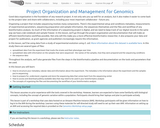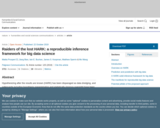
The Journal of Physiology and British Journal of Pharmacology jointly published an editorial series in 2011 to improve standards in statistical reporting and data analysis. It is not known whether reporting practices changed in response to the editorial advice. We conducted a cross-sectional analysis of reporting practices in a random sample of research papers published in these journals before (n = 202) and after (n = 199) publication of the editorial advice. Descriptive data are presented. There was no evidence that reporting practices improved following publication of the editorial advice. Overall, 76-84% of papers with written measures that summarized data variability used standard errors of the mean, and 90-96% of papers did not report exact p-values for primary analyses and post-hoc tests. 76-84% of papers that plotted measures to summarize data variability used standard errors of the mean, and only 2-4% of papers plotted raw data used to calculate variability. Of papers that reported p-values between 0.05 and 0.1, 56-63% interpreted these as trends or statistically significant. Implied or gross spin was noted incidentally in papers before (n = 10) and after (n = 9) the editorial advice was published. Overall, poor statistical reporting, inadequate data presentation and spin were present before and after the editorial advice was published. While the scientific community continues to implement strategies for improving reporting practices, our results indicate stronger incentives or enforcements are needed.
- Subject:
- Applied Science
- Health, Medicine and Nursing
- Material Type:
- Reading
- Provider:
- PLOS ONE
- Author:
- Annie A. Butler
- Joanna Diong
- Martin E. Héroux
- Simon C. Gandevia
- Date Added:
- 08/07/2020



















